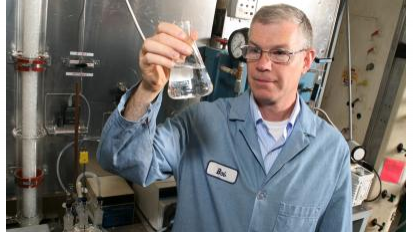Haircare ingredients could hold key to reducing CO2 emissions
By Jeff Salton
22:59 March 24, 2010

New York-based scientists believe that materials closely resembling ingredients found in hair-conditioning shampoos and fabric softeners might be used to “scrub” carbon dioxide (CO2) out of the flue gases from coal-burning electric power generating stations. These aminosilicones show potential as a less expensive and more efficient alternative to current technologies with tests resulting in removal of up more than 90 percent of CO2 from simulated flue gas.
Reporting at the 239th National Meeting of the American Chemical Society (ACS), PhD Robert Perry and colleagues pointed out that coal-burning electric power plants are a major source of the carbon dioxide that has been building up in Earth's atmosphere. They say an estimated 2.8 billion tons of the gas enters the atmosphere each year from the 8,000 coal-fired power plants in the United States alone. Those are among 50,000 coal-fired generating stations worldwide.
"We're very excited about this technology that may pave the way for a new process for carbon dioxide capture," said Perry, who warned of the critical need for practical technology to remove carbon dioxide from flue gases before it enters the atmosphere.
Perry, who is associated with GE Global Research in Niskayuna, NY, said: "The development of a low-cost solution for CO2 capture would go a long way in helping to address our clean energy goals. In the future, the gases that come out of power-plant smokestacks will be virtually free of carbon dioxide emissions."
Current CO2 capture methods are expensive and inefficient, according to Perry who hopes this new type of aminosilicone, a group of materials widely used in fabric softeners, hair conditioners, and flexible high-temperature plastics will solve these problems. In laboratory-scale tests using a device to simulate flue gas conditions of continuously streaming gas and relevant temperatures, the new material captured more than 90 percent of the CO2 added to the system.
In future tests, liquid aminosilicone solvent will be used to absorb CO2 and then be transferred to a desorption unit where CO2 will be removed from the aminosilicone and sequestered. The aminosilicone solvent will be recycled to react with more CO2-rich flue gas.
Copyright © gizmag 2003 - 2010 To subscribe or visit go to: http://www.gizmag.com